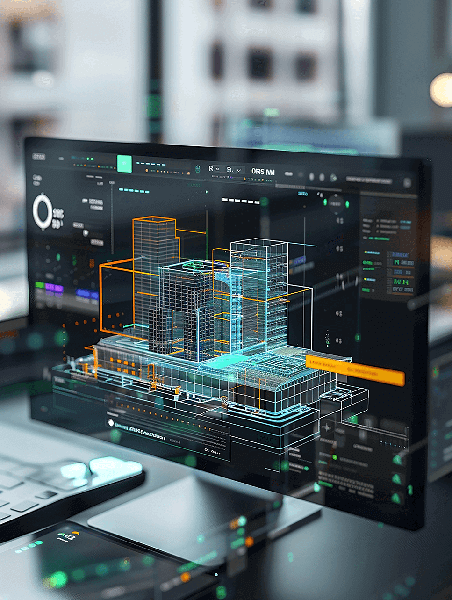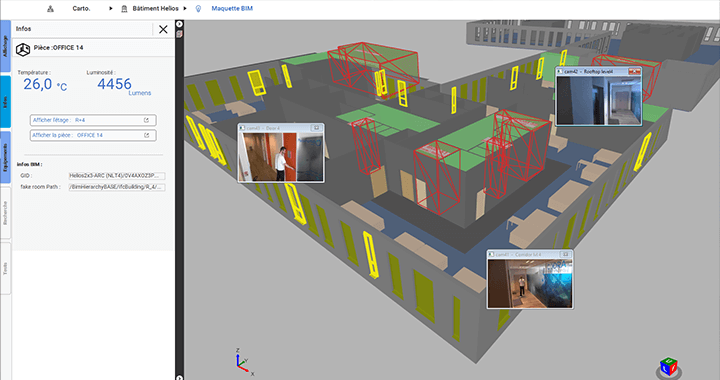Over the past few years, BIM (Building Information Modeling) has become an essential tool in the construction and building management sectors. Long seen as a technology for architects and engineers, BIM is now taking a decisive step forward, becoming a strategic lever for safety and security professionals.
With the Panorama Suite, BIM now serves operational management and the Unified Control Center for security systems. This evolution directly addresses the daily challenges faced by security and safety managers: protecting people and assets, ensuring business continuity, and anticipating risks in an increasingly complex threat environment.
A New Use of BIM for Security Teams
Traditionally, the BIM model is used during the design or construction phase. But its value doesn’t stop there, when integrated into Panorama, it becomes an operational asset for security teams.
In practice, when an alert is triggered (intrusion, fire outbreak, critical technical fault), 3D visualization allows immediate identification of the event’s location within the facility. Operators are no longer limited to 2D plans or sensor lists but interact with an intelligent, realistic digital twin of the site.
This changes everything:
- Faster response times through visual contextualization of incidents,
- Quicker decision-making thanks to access to technical and historical data,
- A predictive, holistic view by combining static (BIM) and dynamic (real-time) information.
Panorama: the Unified Control Center for Security
The Panorama Suite offers a Unified Control Center designed to integrate all security subsystems: video surveillance, access control, fire detection, intrusion monitoring, and technical alarms.
By integrating BIM into this ecosystem, CODRA takes a major step forward. It’s no longer just about centralizing heterogeneous data flows but about placing them in their real-world context.
Concrete benefits for security departments include:
- Anticipate: Identify critical areas in the 3D model to fine-tune preventive measures.
- Coordinate: Automatically trigger multi-system scenarios (e.g., fire detection → smoke extraction → door release → control room alert).
- Optimize: Allocate human and material resources more efficiently with consolidated, prioritized alerts.
- Secure: Ensure compliance with cybersecurity standards, supported by CODRA’s commitment to ANSSI requirements.

Towards smarter and safer operations
Using BIM in operations is not just about improving responsiveness — it also enables proactive security management:
- Tracking interventions,
- Analyzing recurring failures or structural weaknesses,
- Simulating crisis scenarios (evacuation, lockdown, etc.).
In short, BIM enhances supervision by adding spatial and technical intelligence to security operations.
In conclusion: by integrating BIM into its Unified Control Center module, CODRA transforms a design tool into a true operational asset. A revolution for safety and security management, providing a richer, faster, and more predictive vision of sites and infrastructures.







